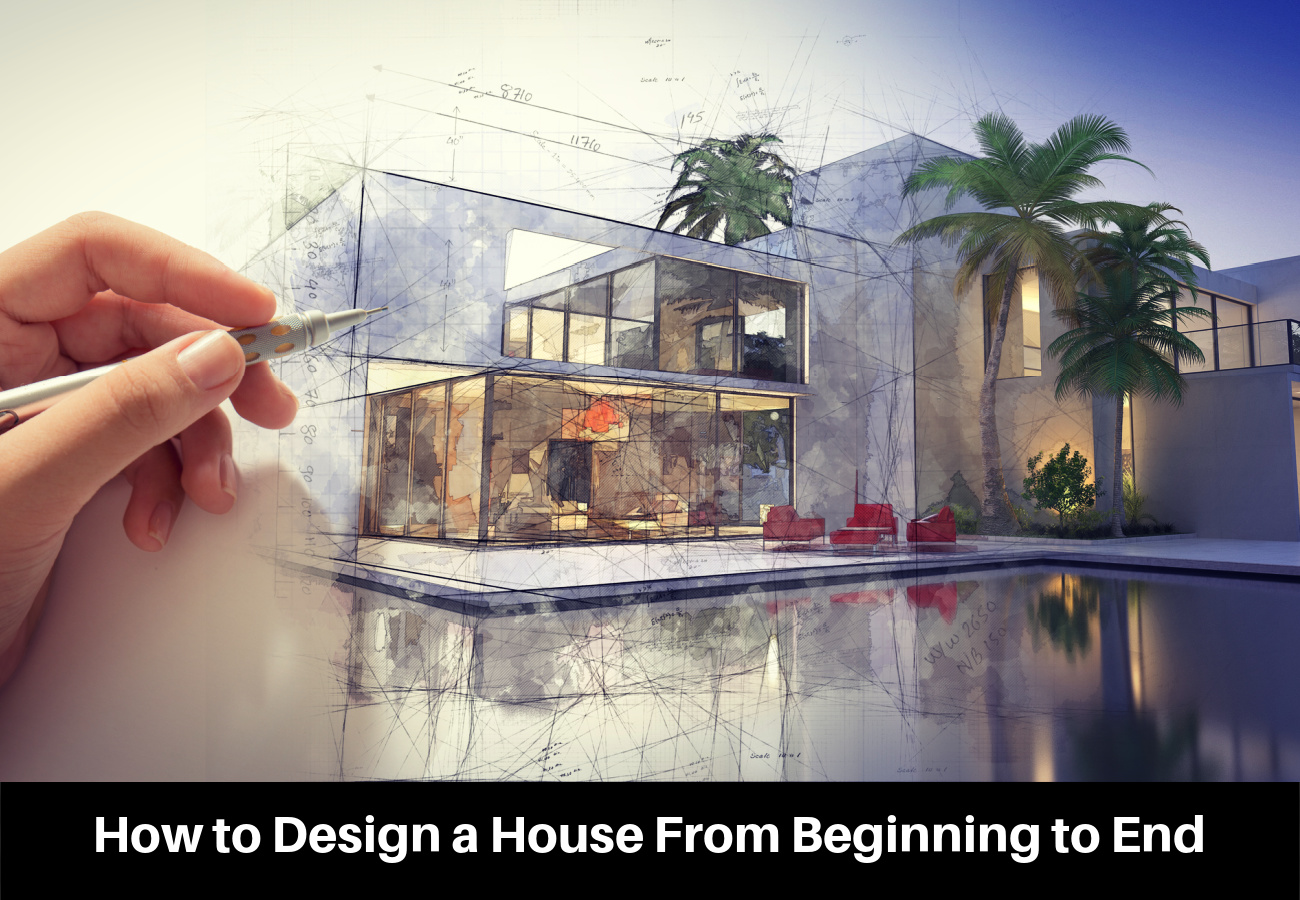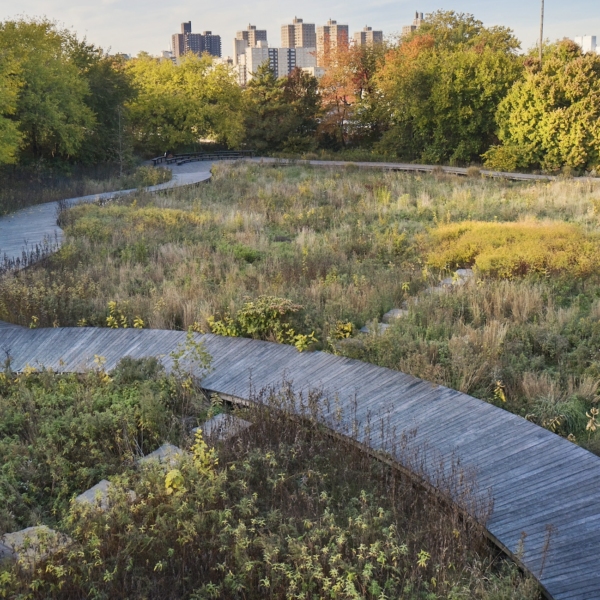The process of how to design a house combines the beauty of architecture with the science of functionality. This journey involves numerous stakeholders, including architects, designers, and, in many cases, the prospective homeowner.

Designing a home requires balancing architectural principles, personal preferences, projected costs, and environmental concerns. This guide will walk you through the steps you need to understand when designing a house, from the first ideas to the final result.
How to Design a House From Beginning to End
Designing a house is a multi-step process that ensures the home has the style you want, the functionality you need, and a cost you can afford.
Define Your Needs and Goals
Before an architect even begins to draw the first line of your house plan, you need to decide how you are going to use the home. As you think about and discuss these ideas, make a list of all the features that you “must have,” as well as items that would be nice but aren’t necessities.
- You should identify the purpose of the home. Consider options like whether it is a primary residence, a rental property, or a vacation home.
- People in different stages of life have distinct needs, such as living with small children, contemplating retirement, or someone living on their own.
- Think about how the style and layout of the house will contribute to its functionality. Consider how many bedrooms you will need and if you want the house to be one-story or multi-story, as well as the number of bedrooms and bathrooms.
Establish a Budget
Create a comprehensive budget that will include all aspects of the planning, designing, and building process. Secure the funding through a mortgage company, personal wealth, or other funding sources. Make sure that your budget includes:
- Home design costs for paying architects and home designers
- Construction costs like building materials, labor, and the building site
- Permits and contingency costs
Site Selection
Carefully select the area where you want to build your home, making sure you take into account important considerations when you are choosing:
- Assess the site’s accessibility to stores, parks, hospitals, and work locations.
- Consider the environmental impact of building a home on a particular site.
- Understand the state, city, county, and neighborhood guidelines for particular sites. These may have restrictions concerning house style, color, and size to which your home design must adhere.
- Gather feedback from professionals like engineers and surveyors to ensure that the site is suitable for construction and if your home design will be restricted because of issues like easements, flood plains, soil quality, or topology.
Conceptualization and Planning
The conceptualization and planning stage is where the dream house becomes a technical design and blueprint.
- You can use home design software to help with this stage. Work with a professional designer or create your own design.
- A homeowner can also hire architects and designers to plan a home based on their preferences and needs. Try to interview different companies to understand their style, fees, and processes.
- Make sure your list of “must-haves” and other significant personal preferences are part of the design process, no matter what method you choose.
- This stage may include the creation of 2D and 3D renderings to ensure that you like the feel and flow of the home or if changes need to be made before the plan development stage.
Design and Development
Once you have chosen your route for creating a house design, work to create detailed architectural plans and blueprints that translate your dream house into reality.
- Keep your ideas list handy to check the home design at every stage.
- Look at the layout of the rooms, dimensions, and other structural details to ensure that they comply with your ideas.
Permits and Regulations
Once the design process is complete, you will need to check with the local authorities to get the necessary permits before construction begins. Compliance with building codes ensures that the construction of your house avoids legal issues and delays and that the design and process are safe.
- The permitting step requires getting building permits, zoning variances, and environmental clearances.
Structural and Mechanical Systems
Consult engineers regarding the structural and mechanical systems of your home.
- Consult a structural engineer to craft structural building plans according to the house designs. They are able to ascertain the foundation’s grade, the materials required for the structure, and the appropriate roofing materials in accordance with code specifications.
- You can get assistance from mechanical and electrical engineers in determining which HVAC, plumbing, and electrical systems will work best in your house. Request mechanical and electrical schematics from engineers to make sure contractors can finish constructing the systems.
Exterior Material Selection
The house design and blueprint may include a list of materials, fixtures, and finishes that you can use on the interior and exterior of your home.
- You can customize the exterior materials with options like bricks, stones, wooden shakes, and siding.
- As you think about materials, balance the selection according to cost, durability, and aesthetics.
Design
Look at your house plans to evaluate the interior design of your home.
- Consider materials that you will use, including wall and ceiling material, wood paneling, moldings, interior stone, metal finishes, and flooring materials.
- Think about storage solutions like built-in cabinets and bookcases for areas like bathrooms, kitchens, mudrooms, living rooms, and home offices.
Sustainability and Energy Efficiency
Investigate ways that you can incorporate sustainable and efficient systems into your home design because these will reduce the environmental impact and cost of your house.
- This may include the use of energy-efficient windows, proper insulation, and renewable energy sources like solar panels.
- Explore eco-friendly building materials that are both sustainable and durable.
Construction Bidding and Contractor Selection
During this stage, you will be gathering bids from contractors to compare their work, costs, and schedule.
- Request bids for building the home from multiple building contractors. Review their work and investigate their references by calling past clients.
- Select a builder based on their proposal, experience, schedule, and compatibility with your goals and home design.
- Sign a contract with a builder and establish a clear project timeline.
Quality Control and Inspection
Once the contractors start building the home, conducting regular inspections of the structure will help you spot problems early.
- City or county officials will conduct professional inspections periodically to ensure that the builders are maintaining safety standards and complying with building codes.
Interior Furnishings and Decorations
You can think about furniture and interior design after construction has begun.
- Choose décor and furniture that accentuates your home’s style and architecture.
- Take into account the layout and purpose of each room when selecting furniture and décor, and make sure they meet these needs.
- Be mindful of the various products’ sizes and make sure to allow adequate space for door clearances and walkways.
- Consider a color palette that you want to use in interior spaces, and select upholstery and wood colors that work together.
Landscape and Exterior Design
Planning the exterior spaces will allow you to create the ideal setting for your home. Even if you can’t execute all the plans immediately, the plans will give you a goal for the future.
- As you plan outdoor spaces, think about functionality, aesthetics, and maintenance.
- Think about plants and hardscapes that will complement the home’s design and local environment.
Final Inspections and Permits
Once your home’s structure is complete, you will need to complete the necessary inspections to ensure that the building meets your expectations and get the permits you need to occupy the home.
- Conduct a final walk-through with the builder to ensure that all systems are functioning properly and that everything is completed to your satisfaction.
- Alert the appropriate officials that the building is complete. They will complete a final inspection and collect any residual fees before they issue an occupancy permit. Ensure that the plumbing, electrical, and mechanical systems are operational so that officials can conduct a thorough final inspection of the home.


